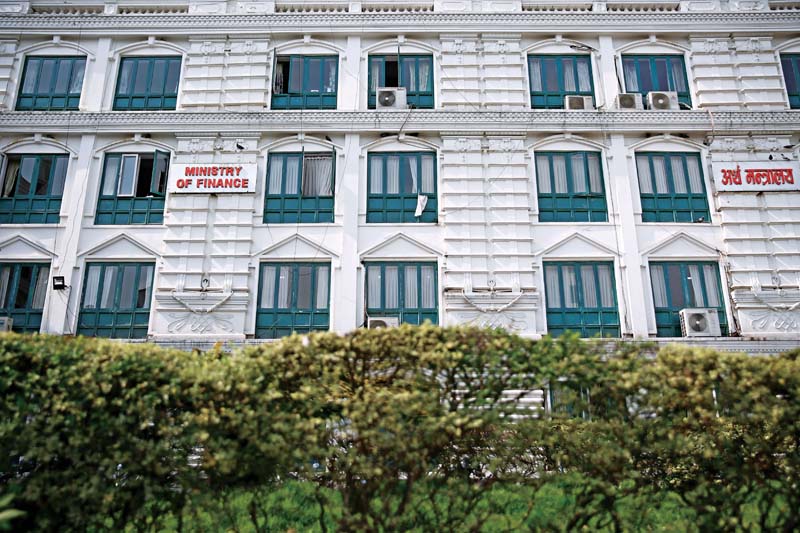Govt must provide 55pc fund to achieve SDGs
Kathmandu, October 24
The government has to contribute a huge chunk of investment to achieve the sustainable development goals (SDGs) by 2030. Based on the costing of the SDGs prepared by the National Planning Commission (NPC) — apex planning body of the government — the Ministry of Finance (MoF) has said that 55 per cent of the total investment worth Rs 1,770 billion per year till 2030 must come from the government.
According to Shreekrishna Nepal, joint secretary at MoF, the government must spend 15 per cent of the aforementioned estimated investment in infrastructure sector every year because the infrastructure bottleneck is considered as the major challenge to achieve the goals related to the social sector. “The government has planned to encourage the private sector as well for infrastructure development to fill the yawning gap seen in the infrastructure sector.”
“Owing to infrastructure bottleneck the government is seeking and managing resources to take forward some infrastructure projects, mainly in connectivity and energy sector.”
The government has said that the private sector has to contribute significantly to achieve the targets of SDGs. As per the MoF, the private sector and cooperative sector have to contribute for the development of particular sectors like industry, energy, transport, for livelihood enhancement, job creation and poverty alleviation, among others.
The annual amount worth Rs 1,770 billion which is estimated to be required to achieve the SDGs includes total investment from the government, private sector and
cooperatives, among others.
The country has formulated its plans and policies based on the targets set under the SDGs, and the NPC has already prepared the baseline report of the SDGs to take the development drive forward.
The cost estimated by the government to implement the programmes to achieve the targets set in the SDGs is more than the figure of the national budget. Out of the 17 goals under SDGs, Nepal is concerned with 16 goals except goal number 14, which is related to conservation and sustainable use of the oceans, seas and marine resources. The baseline report on SDGs has set 428 indicators under 16 various goals that are relevant to Nepal. However, the apex planning body has said that it will be tough to monitor and keep proper database of each indicator.
The government has sought contribution from the private sector, civil society and I/NGOs to achieve the sustainable development goals. The baseline report prepared by the NPC has streamlined the activities of various stakeholders that are working on the small components to achieve the SDGs to bring down the number of indicators.
The provincial and local governments are also framing their plans, policies and programmes based on the baseline report of NPC. Based on the indicators set under the various goals, basically, the government and non-governmental organisations develop their programmes to achieve the given targets.
The government will seek the resources to meet the resources gap after analysing the potential investment from the government, private sector and I/NGOs in each sector, according to NPC.
The NPC has also aligned periodic plan and fiscal budget with the SDGs. It has set the strategies and priorities to achieve the SDGs aligning with the long-term plan of the various ministries, like Ministry of Education, Ministry of Health, Ministry of Agricultural Development and Ministry of Environment, among others.






